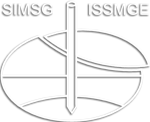Liquefaction mitigation using 3D printed geocells
Liquefaction mitigation using 3D printed geocells
Mitigation of liquefaction through conventional techniques like densification, grouting, and earthquake drains are well-explored in the literature. However, the use of geosynthetics for liquefaction mitigation has not emerged as a popular solution because of the lack of fundamental research in this direction and practical difficulties in reinforcing the ground beneath foundations and other structures. In this context, the present study proposes geocells for liquefaction mitigation, which can be easily adopted in the construction of retaining walls, slopes, and bridge abutments. The basic principle of strength improvement through geocells is the increase in the confinement of the soils, which is beneficial for liquefaction mitigation. The higher confinement has multiple benefits, including densification, development of apparent cohesion, and an increase in frictional strength, which hampers soil liquefaction. Cyclic triaxial tests are conducted on geocell reinforced sands to understand these aspects. These geocells are indigenously manufactured in our laboratory through 3D printing of polymeric sheets and ultrasonic welding. 3D printing is especially useful in creating specific geocells with controlled dimensions, scaled tensile strength, and desired surface features. These geocells are filled with saturated sand and tested under sinusoidal loading. The effects of printing parameters on the pore water pressure development in specimens are studied. Results are analysed to bring out the quantitative benefits of geocell reinforcement in reducing the excess pore water pressure and increasing the number of cycles required for liquefaction.
P. Krishnaraj; Gali Madhavi Latha; T. G Sitharam
9th International Congress on Environmental Geotechnics (ICEG2023)
Human-Induced and Natural Disaster Mitigation
Liquefaction Engineering, Geosynthetics, Laboratory Testing
https://doi.org/10.53243/ICEG2023-381
